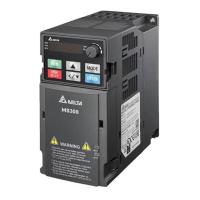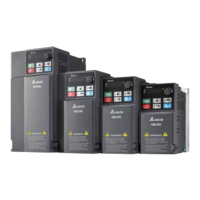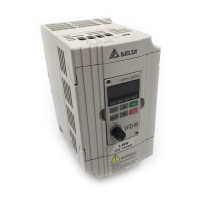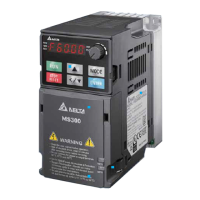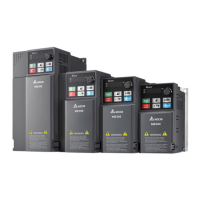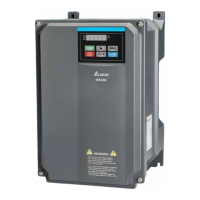Chapter 16 PLC Function ApplicationsMH300
Example 3: Setting (SET) and reset (RST) command protective circuit
Figure 16-39 shows a protective circuit composed of RST and SET commands.
A priority stop occurs when you place the RST command after the SET command.
Because the PLC executes programs from the top down, at the end of the program
the state of Y1 indicates whether coil Y1 is electrified. When X1 and X2 both actuate,
Y1 loses power, and this is therefore referred to as priority stop.
A priority start occurs when you place the SET command after the RST command.
When X1 and X2 both actuate, Y1 electrifies, and this is therefore referred to as
priority start.
SET
Y1
RST
Y1
X1
X2
Top priority of stop
SET
Y1
RST
Y1
X2
X1
Top priority of start
Figure 16-39
Commonly-used control circuits
Example 4: Conditional control
X1 and X3 respectively start and stop Y1; and X2 and X4 respectively start and stop Y2.
All have protective circuits. Because Y1’s N.O. contact is in series with Y2’s circuit, it
becomes an AND condition for the actuation of Y2. The action of Y1 is therefore a
condition for the action of Y2, and Y1 must actuate before Y2 can actuate. See Figure 16-
40.
X1
X3
Y1
Y1
X2
X4
Y2
Y2
Y1
X1
X3
X2
X4
Y1
Y2
Figure 16-40
Example 5: Interlocking control
Figure 16-41 shows an interlocking control circuit. Depending on which of the start
contacts X1 or X2 becomes valid first, the corresponding output Y1 or Y2 actuates, and
when one actuates, the other does not actuate. Y1 and Y2 cannot actuate at the same
time (interlocking effect). Even if both X1 and X2 are valid at the same time, because the
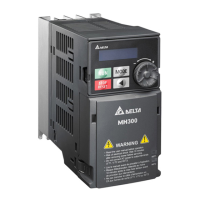
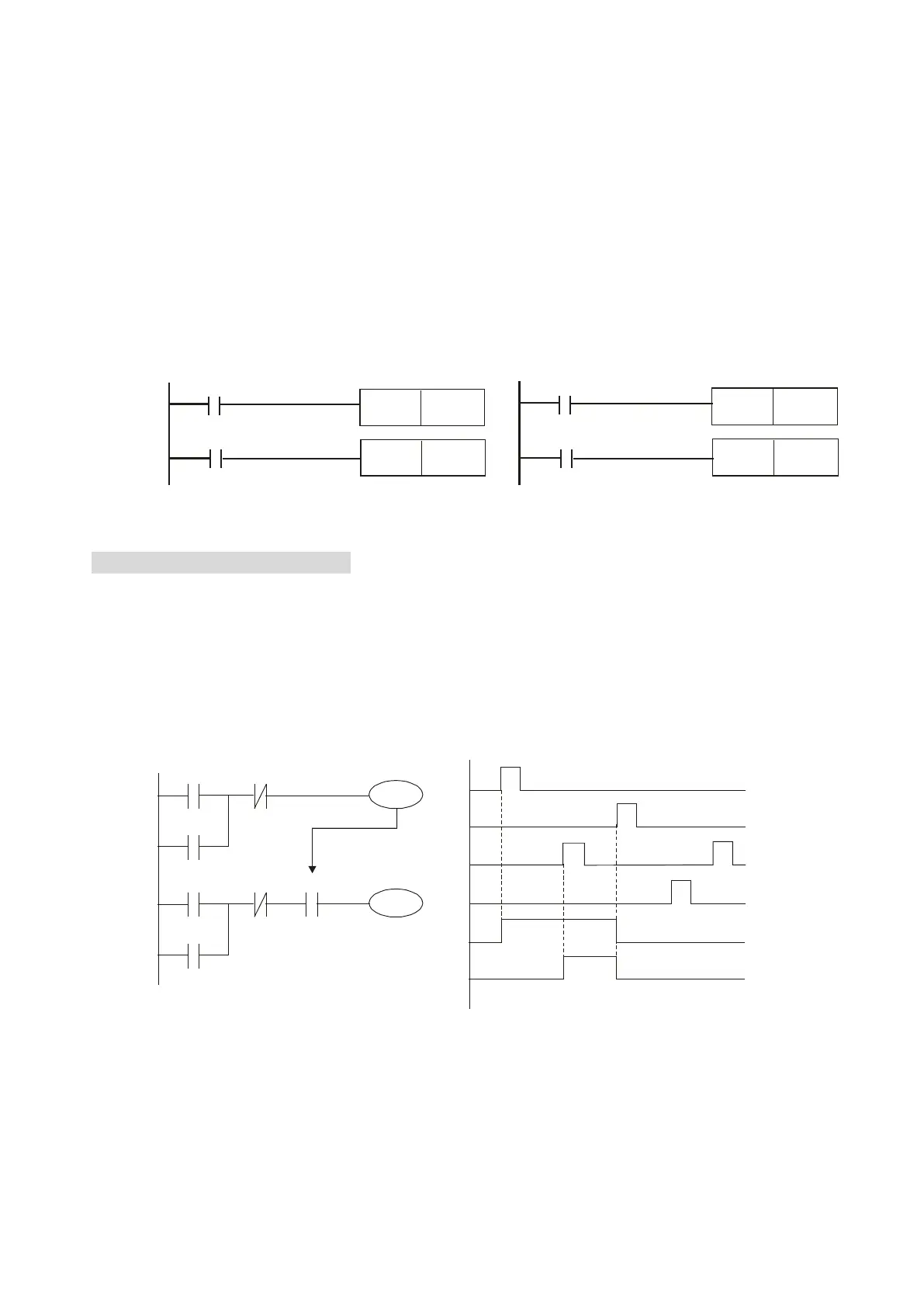